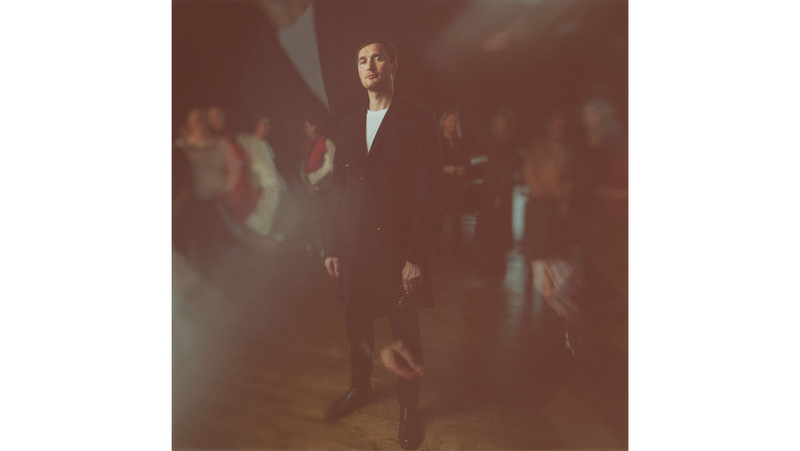Eschewing my usual Friday night supping gin with pals at Manchester’s HOME, I strolled down Oxford Road to the Royal Northern College of Music for an evening of culture and wine.
Opera North had invited me to see the latest in its FILMusic commissions where it asks contemporary composers to create new scores for silent classics. I’m still in awe of the late Johan Johannsson’s score for the brilliant Louise Brooks in Pandora’s Box, and I’m looking forward to Julia Holter’s composition for Dreyer’s The Passion of Joan of Arc later in the year. The combination of avant-garde music and classic silent cinema is not everyone’s cup of tea but it’s an experience worth every minute of this breezy evening.
Tonight’s choice is the youthful Scottish musician and composer, Erland Cooper, who has been tasked with scoring The Wind, a 1928 classic starring the legendary silent film actress, Lilian Gish. Born in Stromness, Orkney, it’s a safe bet that Cooper knows a thing or two about wind. He is a talented multi-instrumentalist working in a broad range of media including art, theatre and film, exploring themes of place, memory and culture. It’s a fitting choice. He says: “The Wind is like a requiem to a dying medium or art form. I want to echo that in a live score created predominantly from the human voice that touches on its drama and poetry, combining clouds of sound in an almost tone poem score.”
 He is accompanied by two soloists, the 18 women of the chorus of Opera North, and an array of electronic gadgets including a purpose-built wind machine, textual recordings and live analogue processing (which I think means singing). The film is well chosen. The Wind, directed by the Swedish filmmaker and actor Victor Seastrom, was Gish’s last silent movie. She was just 35 and it was her 79th film (I counted them). Her screen presence and acting ability are astonishing. We often forget what a skill it was to act without words and how moving it could be. If I had any criticism, it would be that the RNCM needs a bigger screen. Mind you, nothing less than an IMAX could accommodate the true range of Gish’s talents.
He is accompanied by two soloists, the 18 women of the chorus of Opera North, and an array of electronic gadgets including a purpose-built wind machine, textual recordings and live analogue processing (which I think means singing). The film is well chosen. The Wind, directed by the Swedish filmmaker and actor Victor Seastrom, was Gish’s last silent movie. She was just 35 and it was her 79th film (I counted them). Her screen presence and acting ability are astonishing. We often forget what a skill it was to act without words and how moving it could be. If I had any criticism, it would be that the RNCM needs a bigger screen. Mind you, nothing less than an IMAX could accommodate the true range of Gish’s talents.
Gish plays orphaned Letty who is travelling to stay with the family of her cousin Beverly in Sweetwater, Texas. The county is beset by a fierce north wind said to be caused by the native myth of a ghost horse in the sky. It was claimed to have sent women crazy. Seastrom used eight airplane engines in the Mojave  Desert location to create the effect and it is impressive. The wind is ferocious, unforgiving and unending as is the constant male gaze and emotional pressure to which Letty is constantly subjected. After killing her tormentor Wirt Roddy, she finally confirms her love for her long-suffering and patient husband, Lige Hightower. She declares that she will learn to live with the north wind and its ghost horses.
Desert location to create the effect and it is impressive. The wind is ferocious, unforgiving and unending as is the constant male gaze and emotional pressure to which Letty is constantly subjected. After killing her tormentor Wirt Roddy, she finally confirms her love for her long-suffering and patient husband, Lige Hightower. She declares that she will learn to live with the north wind and its ghost horses.
This is an incredible example of early visual effects which bests any modern CGI. Cooper and the Opera North chorus create a soundscape that swoops and echoes the silent wind of the film. It is eerily engaging and a balanced accompaniment to the intensity of Gish’s performance, as is the very wind itself. I can’t wait for more collaborations between FILMusic and Opera North, so watch this space.
In February, Manchester had its very own ghost horses and north winds – Dudley, Eunice and Franklin. Living close to the Beetham Tower as I do, each storm brought its own windy soundtrack, and the tower hummed a singular ghostly song.
By Robert Hamilton, Opera Correspondent















